Beginners often look for the easiest and friendliest amphibian pets. They do so to kick start their pet-keeping journey with ease. Some such easygoing pets are part of the discussion. Moreover, 5 easy pet reptiles for kids are also worth learning. To learn more, scroll down the page.
Content Table
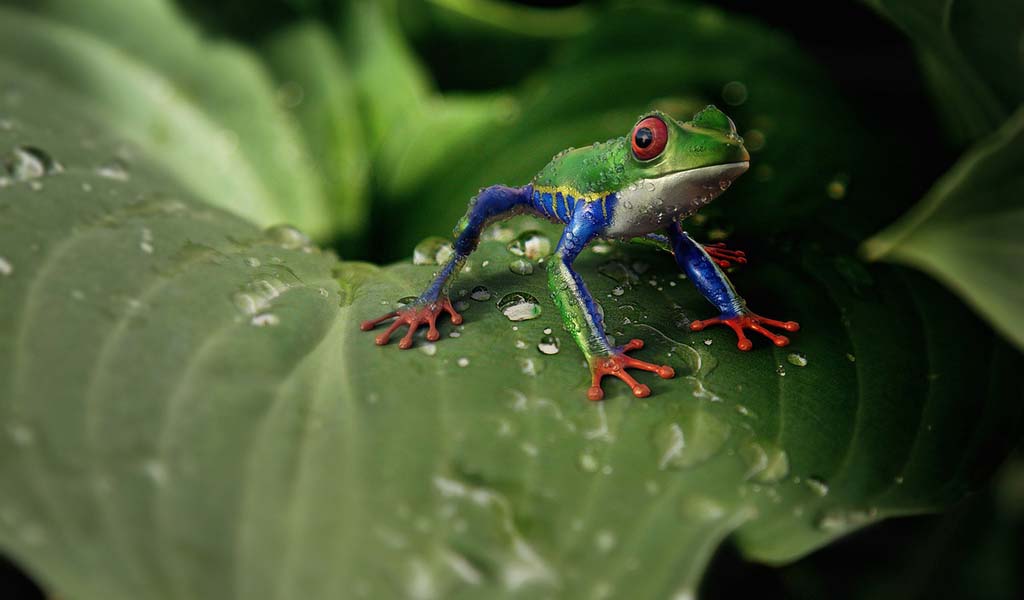
friendliest amphibian pets
Low-Maintenance Amphibian
Amphibians that require minimal attention and care fall into low-maintenance amphibians. Here are some characteristics of such amphibian pets.
Hardiness
They are adaptable to a wide range of temperature and humidity levels. Moreover, they resist temperature and other environmental parameter fluctuations and are less prone to diseases.
No Specific Diet Requirements
Low-maintenance amphibians don’t require special diet requirements. They eat readily available things, i.e., crickets, mealworms, earthworms, etc. Other than that, they have a slow metabolism. Therefore, they only need food 2 to 3 times a week.
Simple Housing Requirements
Low-maintenance amphibians require basic housing requirements. Minimal decor aquariums with ample open surfaces are suitable for them. It is easy to clean and re-install substrate, i.e., coco-fiber, sphagnum moss, soil, etc. Moreover, they do not require any special lighting requirements.
Low attention seeker
They are content with mere observation. They need minimal handling as excessive handling can lead to health risks and stress.
Quiet and Non-disruptive
They don’t make too much noise and usually remain calm and composed. When you keep them in your tank, they will not up-side down decors and other items. Moreover, they don’t produce a strong odor. Therefore, they are suitable options for indoor enclosures.
Long Life
The low-maintenance amphibians are mostly long-lived species.
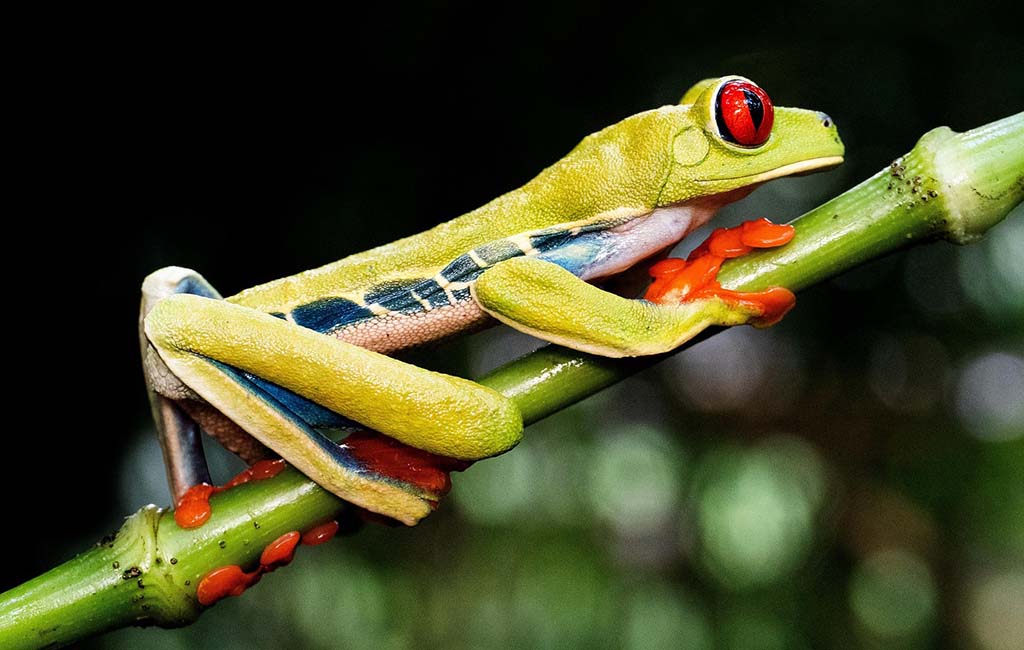
easiest amphibian pets
The Easiest Amphibian to Take Care of
It’s fun to keep amphibians in your enclosure. If you are looking forward to starting your pet-keeping journey, here are a few of the easiest amphibians.
Dwarf Clawed Frogs
Dwarf-clawed frogs are one of the easiest care of amphibians and a beginner’s favorite. In the wild, they use their short claws as a defense mechanism. These olive green top and light underside frogs bring the activity in the tank. Extend: Advice for Keeping African Clawed Frogs in Tanks.
| Feature | Detail |
| Habitat | 10-gallon tank, aquatic, |
| Feeding | 1 or 2 times daily, consume in a few minutes and rarely accept flake.
The best food options are Brine shrimp, Bloodworms, Tubifex worms, Daphnia, Blackworms, Chopped earthworms, Commercial frog foods, Some commercial fish foods, Krill, and Small pieces of worms. |
| Temperament | Active; Peaceful; Nocturnal |
| Lifespan | About 5 years |
Argentine Horned Frogs
These are other beginner-friendly amphibians. They don’t want too much attention and offer rare moments. Mostly, they are lazy and wait for prey to come into their range. The horns on the head are one of their salient physical features.
| Feature | Detail |
| Habitat | Tank size: 15–20 gallons tank
Substrate: Coconut husk fiber, moist paper towels, or foam rubber House them alone as they are carnivores |
| Feeding | 2 or 3 times per week.
Use Feeding tongs. Invertebrates, small mammals, birds, and other frogs |
| Temperament | Aggressive; Predator; Bite painfully |
| Lifespan | About 6 to 7 years |
Pacman Frogs
Pacman frogs are among the the easiest to take care of amphibian pets. Usually, they lie down, do not show high activity, and only require some primary care requirements. However, their handling is tricky because they have delicate skin and potentially bite the person who holds them. Extend: Pacman Frog Species Facts and Information.
| Feature | Details |
| Habitat | Warm and humid, tropical rainforests, and swamps in South America |
| Feeding | A varied diet of gut-loaded insects and adults can live on frozen food as well |
| Temperament | Docile; Most of the time inactive |
| Lifespan | 7 – 15 years |
White’s Tree Frogs
White’s tree frogs are considered the best first amphibian pet. They have a hardy nature and require relatively low maintenance. Relatively said for the reason that they are sensitive to humidity levels, i.e., 60 to 90%. Extend: Keeping Tips for the Tree Frog as Pet.
| Feature | Details |
| Habitat | Forests, wetlands, and urban areas of Australia, Indonesia, and Papua New Guinea. |
| Feeding | Crickets
Roaches Mealworms Other invertebrates |
| Temperament | Docile
Calm Gentle |
| Lifespan | 10 – 16 years |
The American Green Tree Frog
The American green tree frogs are among the easy-to-maintain amphibians. For that reason, they are beginner-friendly as well. They have a hardy nature and don’t require a heater in their tank. They are keen feeder.
| Feature | Details |
| Habitat | Marshes, swamps, ponds, and streams |
| Feeding | Gut-loaded insects and worms
Calcium supplements Multivitamins |
| Temperament | Nocturnal; friendly; social animals |
| Lifespan | 2 – 5 years |
The Friendliest Amphibian Pets
People love to keep animals as pets, but smell and space are constraints against their hobby. In this situation, amphibians are a good option because they are hypoallergenic, do not require great space, and live long with low maintenance. Here are some friendliest amphibian pets.
Red-Eye Tree Frog
With bright eyes, vibrant green bodies, and multiple markings, i.e., yellow, white, and blue, red-eye tree frogs are among the friendliest amphibian creatures. They have a social and friendly behavior. You can listen to them in the evening as they become vocal. Moreover, they thrive in groups.
| Feature | Details |
| Habitat | Lowland rainforests of Central and South America |
| Feeding | Variety of insects and worms |
| Temperament | Good-tempered; Friendly; Active |
| Lifespan | 5 years |
Amazon Milk Frog
With some restrictions, they are among the friendliest amphibians. They are docile, tolerant, and easygoing for the beginners. The cons are that they are jumpy and you need a firm hand while handling them.
| Feature | Details |
| Habitat | Tropical rainforests of Northern South America |
| Feeding | High protein and easy-to-digest insects, e.g., crickets, fruit flies, mealworms, etc. |
| Temperament | Docile; Tolerant; Jumpy when startled |
| Lifespan | 5 – 10years |
Fire Belly Newt
With some restrictions, Fire Belly Newts are among the friendliest amphibians. They are not aggressive and good for beginners. They are active, friendly, and social. However, avoid touching them as they are toxic. Moreover, avoid keeping them with animals that can ingest them as they prove harmful to them.
| Feature | Details |
| Habitat | Ponds, lakes, and streams, in Japan and China |
| Feeding | Variety of insects and worms, whether live or frozen. |
| Temperament | Active
Lively Easy to care |
| Lifespan | 10 – 15 years |
African Dwarf Frog
African Dwarf Frogs are among the friendliest amphibians. They have peaceful and social behavior. Moreover, they are highly playful creatures that love to make relationships or bond with other frogs in the tank. They are suitable for community tanks.
| Feature | Details |
| Habitat | Shallow rivers, creeks, ponds, and flooded forest areas in Central Africa |
| Feeding | Live, frozen, freeze-dried, and pelleted foods |
| Temperament | Peaceful
Active Social |
| Lifespan | 5 – 7 years |
Spotted Salamander
With a few exceptions, i.e., not social, they are on the list of friendliest amphibians. They are calm and peaceful. They don’t show aggression toward others and loners. It’s easy to take care of them and has very low maintenance costs. Extend: Aquatic Amphibians Axolotl Facts and Abilites.
| Feature | Details |
| Habitat | Forests, ponds, and streams of Eastern United States |
| Feeding | Eat a variety of invertebrates, i.e., worms, slugs, snails, spiders, and insects |
| Temperament | Docile; Non-aggressive; Secretive; Avoid conflict |
| Lifespan | Up to 20 years |
What Should I Choose as a First-Time Amphibian Pets?
As a beginner, always consider care requirements, handling, and life span. By reminding these things, the White Tree Frog is the best amphibian pet for the first-timer. They are easy to care for, hardy, and require low space.
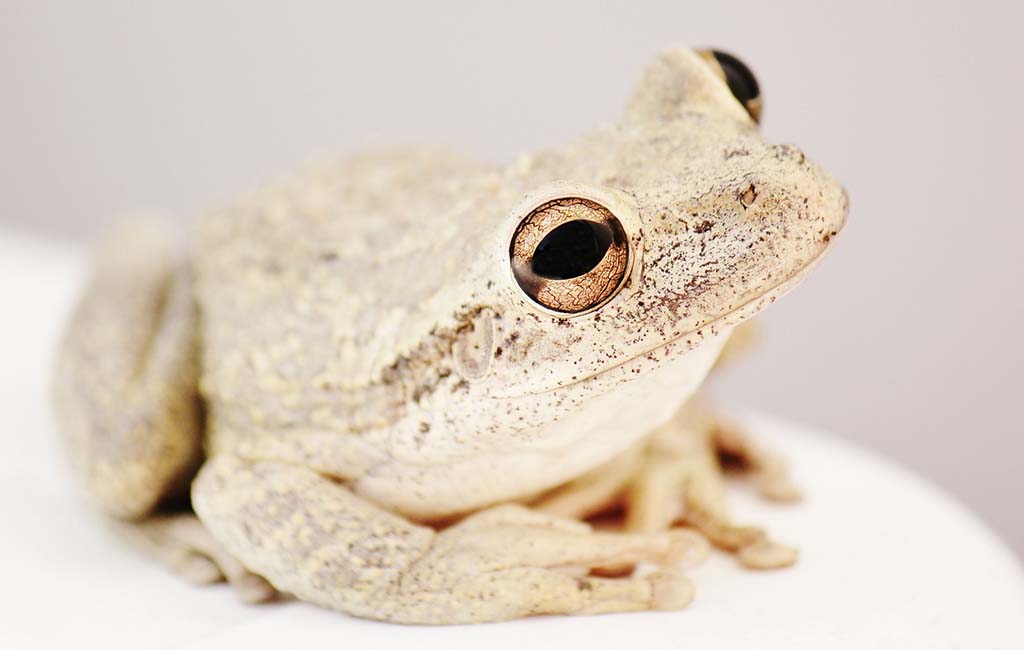
easy pet reptiles for kids
Easy Pet Reptiles for Kids
The easiest amphibian pet reptiles that have a docile nature require low maintenance and have small or adequate sizes, which are suitable for kids’ tanks. Select species that improve the learning curve and have a playful and joyful nature. These things help to entertain kids. Here are such easy pet reptiles for kids.
Corn Snake
Although, you might feel a bit weird about it being a snake and suitable for kids. Yes, this is a suitable reptile option for them as they are easy to take care of, docile, and non-harming. However, to avoid escape, keep them in secure housing.
They don’t require daily attention. Adults need one or two meals a week. It’s not necessary to feed them with live mice. You can feed them pre-killed and frozen mice as well. Frequent handling of them, in your hands makes them tame.
Bearded Dragon
Bearded dragons are uniquely shaped and friendly behavior pets. They are recommended as classroom pets for observation and learning. However, they are not suitable for very young kids due to salmonella’s risk. Grown kids with proper supervision can keep them. A vivarium at least 1.2 meters long with good ventilation is enough for housing.
Use a UVB lamp to maintain a temperature gradient of 38–42°C hot to 22–26°C cool. A low humidity, i.e., 30 – 40%, does a great job. Feed them on live insects and greens. They are not social, so manage them in a separate setup. Gently handle them and less frequently keep them out of the tank. Monitor them for shedding, brumation, and abnormal droppings.
Crested Gecko
Crested Geckos are another kid’s friendly pet. They are docile and don’t bite on handling. They are among the suitable options for a beginner lizard tank person. They are native to the rainforests of New Caledonia. Their native area is highly vegetated.
A tall 20-gallon tank is enough space for one male. Maintain a temperature gradient between 68–75°F, never exceeding 80°F. Provide them with lighting for 10 to 12 hours per day.
These geckos require 70 to 80% humidity. Use a mist sprayer and put a water dish in the tank. Feed them powdered from gecko food daily and gut-loaded insects once or twice a week. Handle them gently and avoid handling them from the tail. Monitor them for shedding, appetite, and other signs of illness.
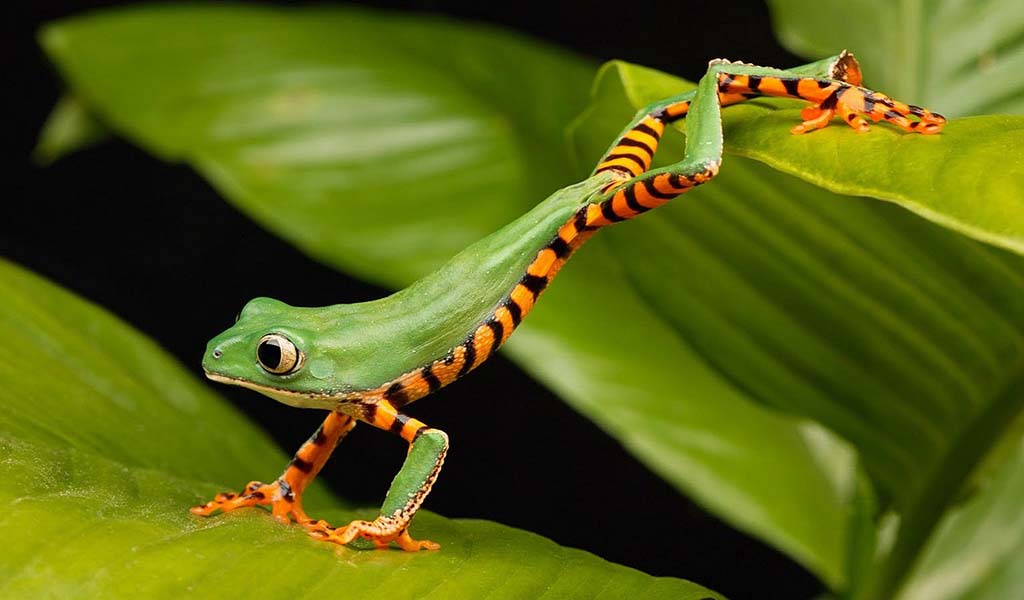
easy and friendly pet reptiles
Russian Tortoise
Russian tortoises are another good reptile pet for kids. They are docile, slow-moving, and quite hardy. Unlike many other tortoises, they are small, i.e., 4 to 8 inches long. They are quiet and gentle. Their responsiveness increases their suitability, as they can recognize their owner. They live a long life, i.e., 40 to 60 years.
A large, dry, and well-drained tank is a suitable house for them. Maintain 80–85°F at daytime, 95°F at the basking spot, and 70-75°F temperature for the night in the tank. Give them supervised outdoor time and install UVA/UVB lighting in the tank. Replace the lights after each 4 to 6 months.
They do well at low humidity, i.e., 40 to 50%. Feed them on a high-fiber and low-protein diet, i.e., leafy greens, grasses, and flowers. However, avoid feeding them on animal protein. Dusted their food with Calcium and multivitamin supplements. They can be prone to respiratory infections, parasites, and metabolic bone disease. So, regularly check them out.
Green Anole
The American chameleon, the American anole, and the Carolina anole are some names of Green Anoles. They are good reptile pets for kids as they are highly interactive and enjoy fun activities, such as climbing. Moreover, they are easy to pick up. In the native environment, they deceive predators by shedding their tails.
A minimum 10-gallon or a larger tank is sufficient for a pair. Only keep one male per tank, and secure the top with a lid. Maintain a 60 to 70% humidity in the tank. Maintain 75-80°F at daytime, 85-90°F for basking area, and 65-75°F at night. Use under-tank heat and avoid white lights.
Turn the lights on for 10-12 hours a day. Replace them every 6 months.
Lay peat moss and soil with bark substrate, and don’t forget to grow plants. Never use oily or very dry substrate. Feed them on gut-loaded insects, e.g., crickets, mealworms, etc. Dust the meal with calcium and vitamins and feed them twice or thrice daily.
The Last Word
Amphibians are great pets. A hard, no picky eater, simple housing, quiet, and long life are some parameters for the best amphibian pet. Dwarf-clawed frogs, Pacman frogs, white tree frogs, etc., are some of the easiest amphibian species. Red-eye tree frogs, Amazon milk frogs, etc., are the friendliest species.
White’s tree frogs are recommended for first-time pet keepers. Corn snakes, bearded dragons, Russian geckos, etc., are some kid’s tank amphibians. Grow them and teach your kid responsibility and love the environment.
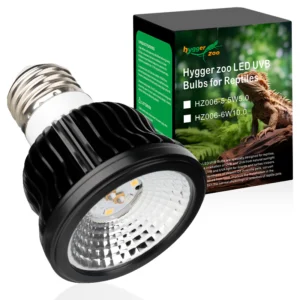
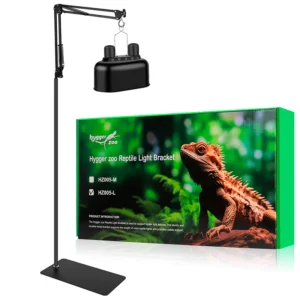
Leave a comment